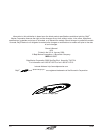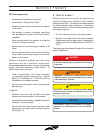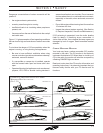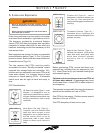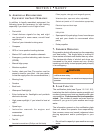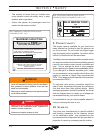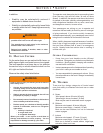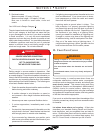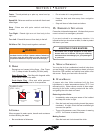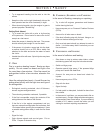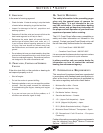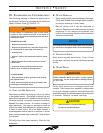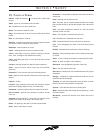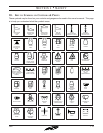
H2X
®
1.8
SeCtion 1 • SaFety
R
Speed changes you.
TM.
D. Sheltered waters
Maximum speed: 15 knots (18 mph)
Maximum wave height: 0.5 meters (1.5 feet)
Boat use is limited to small lakes, rivers and
canals.
Your H2X boat is Design Category C.
The wind speed and wave height specied as the upper
limit for your category of boat does not mean that you
or your passengers can survive if your boat is exposed
to these conditions. It is only the most experienced
operators and crew that may be able to operate a boat
safely under these conditions. You must always be aware
of weather conditions and head for port or protected
waters in sufcient time to avoid being caught in high
winds and rough water. Do not take chances!
Getting caught in severe weather is hazardous. Bad
weather and/or rough sea or water conditions can cause
an unsafe situation. Consult local weather information, or
listen to the NOAA weather reports for the latest weather
conditions or any impending deterioration of the weather
before setting out and while underway. The following are
a few basic weather-related rules:
• Check the weather forecast and the water conditions
before leaving and while underway.
• A sudden change in wind direction or speed or
an increase in wave height indicates deteriorating
weather.
• Have everyone wear a personal otation device.
• If a storm approaches, immediately seek a safe
harbor.
• If a storm hits, have everyone sit in the cabin or on the
cockpit deck in the boat. Head the bow into the wind
with enough power to maintain slow headway.
• If you encounter fog, determine your position, set a
safe course, slow down and alert other boats of your
presence with a sound signal.
DANGER
!
DO NOT ATTEMPT TO BOAT IN
SEVERE WEATHER CONDITIONS
DEATH OR SERIOUS INJURY CAN OCCUR
GET TO SHORE BEFORE
THE WEATHER TURNS BAD
• If a lightning storm approaches, the safest action is to
dock and disembark. If you cannot return to shore,
have passengers go inside the cabin and remain
there until the storm passes.
• Lightning seeks a ground when it strikes. The
best protection is a properly grounded lightning
rod placed high enough over the deck to provide a
protective umbrella over the hull. Depending upon
the likelihood of your being in a lightning storm,
consult your dealer for installation of a lightning rod.
If caught in a storm, stay clear of the lightning rod,
all attached wiring, and all metal parts of the boat.
• Stay out of the water during a lightning storm. If
caught swimming during a storm, get back into the
boat and remain there until the storm passes.
13. charT Your course
To avoid boating in unsafe areas where there are
underwater obstructions, shallow water, unnavigable
conditions such as dangerous currents, and others, you
must chart a course. This means having and using
the National Oceanic and Atmospheric Administration
(NOAA) charts for coastal waters, observing and
understanding all navigational aids, using the knowledge
and guidance of experienced boaters, and being aware
of the tide times where appropriate.
If you are in an unfamiliar area without knowledge of the
hazards, proceed very slowly and have someone watch
for hazards.
Let others know where you're going. A oat plan
describes your intended cruising course and itinerary,
boat description, and your expected time and date or
return. Give the oat plan to a friend or relative, so they
can give the information to a national boat agency, like
the U.S. Coast Guard, in the event you fail to return.
Hitting an object in or under the water or boating in
dangerous currents can cause serious injury or death
to boat occupants.
You must know where the hazards are and avoid
them.
In uncharted waters, boat very slowly and post a
lookout.
! WARNING



